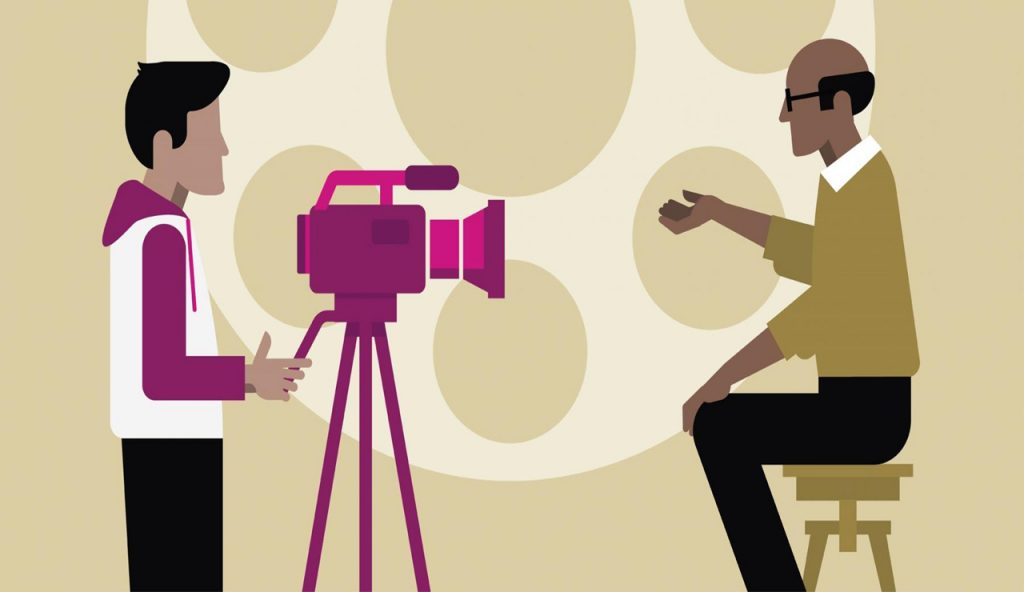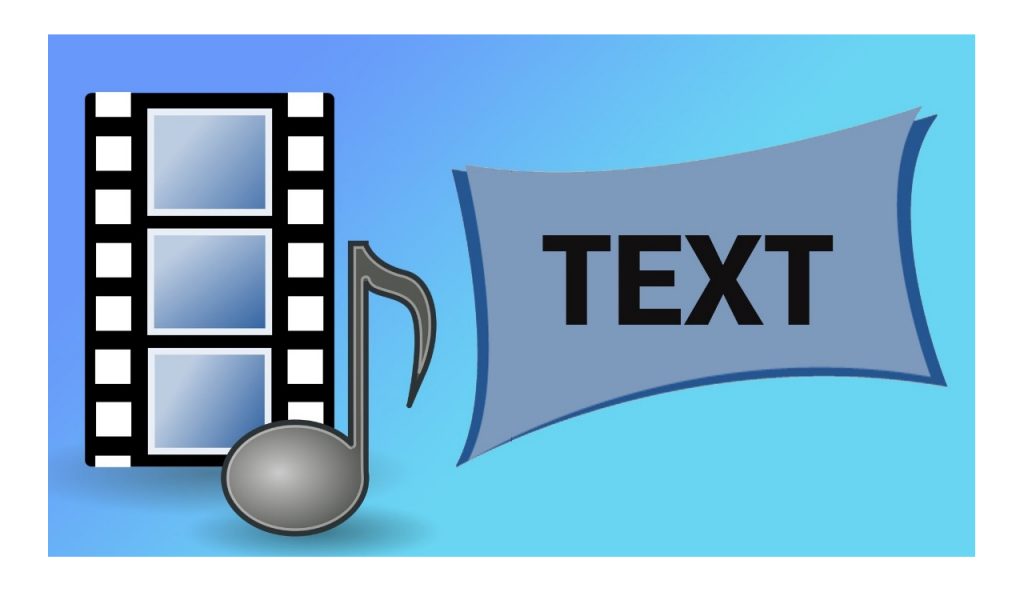Transcribing a Documentary Interview!
Transcription of documentary interviews
In the production process of making a documentary, one of the more demanding tasks that might come up would be arduous chore of transcribing interviews. There are many reasons why a documentary should have the transcription of the interviews, legal purposes for example, or for archiving documents, or just for better internet visibility, if the documentary is presented online, transcriptions make it easier for search engine crawlers to find and categorize the video content, which in turn makes it easier for potential viewers to find it and watch it. Having a transcription alongside your video content is very useful, no doubt about that, but if you decide to do the transcription yourself, you might be surprised how much time and effort it takes.
You might start transcribing the interview manually, and after a couple of hours you will realize that you have just transcribed a small part of the material, and you are not quite sure if you did it with enough precision. There might be some audio issues, or you might not be sure what was exactly said, because the person being interviewed had an accent that you are not so familiar with.
You take a break, have a cup of coffee or tea, and wonder how you might make this process more efficient, because you simply do not have enough time or patience to do this. There are more pressing issues that you must attend and the deadline is near. If you do not publish your video soon, there might be some financial repercussions. So, you need to get this done as fast as possible. Time is running out, it is 3 AM, you have stuff to do to tomorrow. Should you continue working on this, or should you get some sleep and try to wake up earlier, and continue with this prolonged torture of nerves.
Maybe you should outsource some of these tedious tasks, so you can focus on what is really important, the thing you really care about, and that is the quality of the content, all the fine tunings and editing, the aspect of aesthetics and meaning. The dawn is slowly creeping into your room, the first rays of sun enter through your window blinds, and slowly a gradual realization is taking place in your mind, a kind of epiphany that is not so personal, but business oriented, and still equally important. You realize that you are not the first professional that has encountered this problem, there is need for fast and precise transcription, and therefore there should be many transcription service providers that can do this. There is probably a ton of them, but how to choose the right one? Where to start? In the final moment of early morning lucidity, you remember that you overheard a conversation in the subway a couple of weeks ago, some people in suits, they looked like media professionals, were talking about how their business model improved when they added transcripts to their podcasts, and the word Gglot was thrown around a lot of times. Strange how memory works. You enter Gglot into Google, and finally, you come to us. Welcome! We are here for you.
Okay, okay, we know that things are not so dramatic usually. The purpose of this short narrative was to get your attention, and now is the time for the serious stuff. In this article we will explore the world of documentary production, the role of transcripts in this process and what possibilities you have when it comes to transcribing recordings. We will also explain how our transcription service, Gglot, can help make your life easier and less hectic. Documentaries usually have very long interview footages which are going to be explored, edited and in the end, only the best parts get to be part of the movie. Without transcripts of those interviews the production team has an extremely challenging task in front of them. Transcriptions make it possible to go through the content more easily and the editing process is less time consuming. This will save you tons of nerves which shouldn’t be underestimated. Transcripts also help to get the facts straight and avoid misinterpretation. On top of that, transcriptions will make the documentary more accessible to the hearing-impaired community or the non-native speaker.

Now let us take a look at interview transcripts and how to make them good.
1. Audio quality
A poor sound quality in a documentary is very irritating. It even seems to be more important to hear what is said in a documentary than to have a clear picture. But the thing is that the quality of the sound isn’t only important for the production process, but it is also the alpha and omega in the word of transcripts. If the sound quality of the recording isn’t on a decent level, it might be an insurmountable problem.
2. Labels and timecodes
If more than one person is talking which is usually the case in an interview, a multi-speaker label is very helpful. Timecodes are also more than appreciated, since this makes the editing process a piece of cake.
3. Paragraph breaks
Paragraph breaks are important since the text won’t look piled up. While reading such a transcript, the reader won’t be overwhelmed, but will get a feeling of organization and structure. The only important thing is that the paragraph breaks are put at optimal places, so that they seem natural.
4. Grammar and spelling
Grammar and spelling matter and can change the meaning completely. Just look at the fallowing sentences and see for yourself: Let’s eat Grandma! Let’s eat, Grandma!
5. Verbatim transcripts
Sometimes small things can be important. For example, the way speakers are expressing themselves, can play an important role in the editing phase of the production. Are there any interruptions, mumbling, too many filler words? This is why sometimes it might be a good thing to order verbatim transcripts, in which you get every sound transcribed, even the ums and ahs. What do you need to do if you want to make a transcription by yourself?

Well, first of all, as we already mentioned in our little narrative above, you need to arm yourself with lots of patience. You will need to listen to the words being said and write them down accurately. Lots of pausing and rewinding will be required. You will also have to mark who is speaking as well as noting the timecodes. At the end you need to revise and edit your transcription while listening once again to the tape: correct mistakes, take due account of grammar and spelling, paragraph breaks and formatting. It will take you hours of work because for one hour of tape you will need to work around 4 hours, maybe even longer, depending on your level of experience. So, the biggest flaw here would be the ineffectiveness.
On the other hand, as suggested you could hire professionals. Outsourcing this task might be a good idea. There are plenty of transcription service provider and all you need to do is to choose someone who suits your needs best. Transcriptions done by humans are very accurate, usually around 99%.
There is also the possibility to leave everything to technology. There is more than one good software on the market that recognize speech and turn audio files into text files. Here it is more than important that the sound quality of the file is excellent. The biggest advantage here is the turnaround time since those software work very fast and no human professional could come close to that. On the other hand, even though its automated transcriptions are evolving a lot lately, the end result isn’t nearly as accurate as human transcription. The accuracy of software transcription might be around 70% which in comparison to the 99% a human maid transcription can offer isn’t very impressive. Grammar and spelling mistakes also occur more often and you probably won’t get speak labels and paragraph breaks which you might request from a manual transcription service provider.
All of this, including the addition labor, is the reason while manual transcriptions are pricier than automated ones. But in the end, it all comes down to your priorities.
Gglot is a professional transcription service provider. If you want to entrust us with you interview transcriptions there are a few things you need to do. Go to our homepage, sign up with your email address. Then, simply upload your audio/video files and order a transcription. You can easily get your verbatim transcription with time coding and speaker label, so everything is ready for your production and post-production phase of filmmaking. We work only with professional transcribers. This is way we guarantee accurate transcripts. You will get them fast for a reasonable price. When the job is done, you will be notified. Before downloading your document, you can read it and edit it before downloading. With Gglot transcription services, you can be sure that there will be less sleepless nights and stress, your interview transcriptions will be done by professionals that value your time and will provide you with a quick and precise transcriptions that will indeed make your life easier.